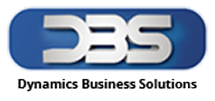Surprising fact: companies with multi-country workforces can spend up to 40% more time on pay runs when systems are fragmented.
This platform brings end-to-end payroll and employee self-service into one native experience for Dynamics 365. It was built to simplify operations across GCC countries while keeping enterprise controls in place.
The service ties calculation engines, automated checks, and audit trails directly to 365 Finance Operations for consistent GL posting and dimensional reporting. That means faster cycles, fewer manual fixes, and clearer visibility for leaders and managers.
For teams moving from scattered systems, Dynamo reduces vendor sprawl and centralizes data models. Learn practical benefits and deployment notes in our Dynamics payroll insights, which outline GCC readiness, time & attendance, and Finance integrations.
Key Takeaways
- Unifies pay runs and employee self-service within Microsoft solutions for consistent operations.
- Supports native and expatriate workforces across GCC with localized rules.
- Connects to Finance for GL posting, cost centres, and audit trails.
- Delivers faster cycles and fewer manual adjustments.
- Reduces vendor sprawl and simplifies long-term governance.
Cloud-Based Payroll and HR for Microsoft Dynamics 365 Finance & Operations
When payroll runs and time tracking live inside the same platform as finance, reconciliation becomes faster and simpler.
Native alignment with Microsoft dynamics 365 Finance & Operations reduces data duplication and enforces consistent setup of pay cycles, earning codes, and company rules. This minimizes manual entries and supports reliable master data for people, positions, and compensation.
Employee self-service and time management
The employee self-service portal lets staff submit time, request leave, and view pay statements. Managers approve timesheets and requests via workflows and email notifications, cutting admin tickets and cycle time.
Real-time processing and analytics
A cloud-based payroll model provides always-current features, rapid scaling to new locations, and centralized administration across legal entities. Power BI dashboards show variance, overtime trends, and leave liabilities so teams act on data quickly.
- Configurable processing engine: supports complex allowances and deductions to reduce exceptions.
- Attendance tracking: syncs with timesheets to prevent discrepancies.
- Integration: follows enterprise best practices for change control and audit readiness.
| Feature | Primary Users | Key Benefit | Outcome |
| Employee self-service | Employees, Managers | Faster approvals, transparency | Lower admin tickets |
| Processing engine | Payroll ops, Finance | Configurable rules, fewer exceptions | Improved accuracy |
| Power BI dashboards | Finance, HR leads | Actionable insights | Faster close, reliable reporting |
| Time & attendance sync | Managers | Consistent hours and balances | Reduced reconciliation |
For details on manual cost handling and migration tips, read our guide on manual payroll costs.
Purpose-Built Capabilities for Multi-Country GCC Compliance and Workforce Management
Designed for regional complexity, this platform combines statutory controls with operational tools to keep multi-country teams compliant and efficient.
Statutory compliance and company-specific tax calculations
The system enforces local regulations and configurable company tax rules so teams meet GCC labor and tax requirements consistently.
Automated checks and audit trails reduce manual reviews and ensure that calculations follow both statute and internal policy.
Expat-ready services
Visa processing, work permits, document renewals, leave travel allowance (LTA), and quota management are built in to lower admin burden.
This reduces legal risk and speeds up onboarding for multinational staff across jurisdictions.
Time & attendance, timesheets and rostering
Accurate time tracking, shift rostering, and timesheet approvals feed direct calculations for overtime and site-based pay patterns.
Managers get a single view of attendance, leave liabilities, and trends to make proactive staffing decisions.
Compensation, benefits and final settlements
Allowances, deductions, eligibility, and final settlements (including end-of-service rules) are modelled for precise results and timely payments.
Integrated posting by GL, cost centre, and dimensions supports consistent management and statutory reporting.
Recruitment, training and performance
Recruitment, learning paths, competency records, and performance reviews live on the same platform to align development with pay decisions.
Centralized data and tracking reduce errors between HR and payroll processing and improve audit readiness.
Learn more about Dynamo Payroll for Dynamics 365 Finance & Operations on the Dynamo Payroll for Dynamics 365 Finance & page.
Payroll Software, HR Software, Cloud Payroll Software, Dynamics 365 FO
Native connections across Microsoft ERP reduce manual hand-offs and improve month-end certainty.
Seamless integration links Microsoft Dynamics 365 Finance and Supply Chain Management with Business Central and legacy NAV. That means employee time, pay calculations, and accounting entries flow end-to-end without repeated exports.
Seamless integration with Finance, Supply Chain, Business Central, and NAV
The platform maps master data so people, positions, and cost centres stay synchronized. Standardized interfaces cut the number of external connectors and lower maintenance overhead.
Financial integration for GL posting, cost centres, and dimensional reporting
Journals post directly to the general ledger with cost allocations and dimensions for granular P&L analysis. Power BI dashboards tie payroll and finance data together for clearer variance reviews.
- Cleaner journals: fewer manual corrections and faster reconciliations.
- Standard workflows: approvals and scheduled postings align with finance calendars.
- Scalable model: add entities or countries while keeping a unified chart of accounts.
Business Central and NAV customers gain consistent posting structures and better visibility for business leaders. For practical integration steps, see our guide on Business Central integration.
Smooth Implementation, Data Migration, and Ongoing Governance
A staged cutover, backed by mapped data and checkpoints, shortens time to first successful run.
The implementation process begins with discovery of technical and business requirements. Teams map current pay elements, time codes, and leave types to the target general ledger and chart of accounts in Microsoft dynamics 365.
Switch providers easily: import time worked, leave, and employee data
Migration includes automated import of employee master records, historical time worked, and leave balances from the prior provider. This reduces manual re-entry and accelerates cutover.
Data validation routines confirm balances, accruals, and year‑to‑date figures before the first live run. Reconciliation checks flag discrepancies for correction.
Security, auditability, and role-based access designed for enterprise operations
Role definitions separate duties across finance, operations, and managers. Permissions are applied to ensure audit trails and compliance.
Integrated workflows guide approvals for time, overtime, and final settlements. These controls embed quality gates into daily processes.
- Quarterly reviews, configuration updates, and admin enablement for continuous improvement.
- Support services to handle feature adoption and regulatory changes without disrupting cycles.
- Systems integration with dynamics 365 reduces brittle interfaces and speeds posting to Finance.
| Phase | Key Actions | Primary Users | Success Metric |
| Discovery & Mapping | Capture requirements, align pay elements to ledger | Finance, IT, Payroll leads | Complete mapping in 4 weeks |
| Migration & Validation | Import time, leave, master data; validate YTD balances | Data team, Payroll ops | Zero critical reconciliation issues |
| Governance & Support | Define roles, workflows, quarterly reviews | Admins, Managers | Faster first‑time‑right payroll |
| Continuous Improvement | Updates, training, regulatory patches | Service desk, Project team | Lower error rates over 12 months |
Conclusion
Dynamo is a unified platform that brings employee self-service, time attendance, and end-to-end processing together to reduce complexity and speed month‑end close.
Employees and managers gain clearer visibility for submissions, approvals, leave, and benefits. The result is fewer errors and faster, more reliable runs.
Compliance across GCC operations is supported with configurable tax and final‑settlement rules, auditable checks, and role‑based controls that strengthen governance.
The platform integrates with Microsoft dynamics 365 finance and related ERP systems for accurate posting, dimensional reporting, and trusted data for the business. Learn more about cloud payroll integration here.
Evaluate Dynamo to streamline operations, lift employee experience, and gain measurable efficiency across entities and countries.
Dynamics Business Solutions (DBS) is certified Microsoft Dynamics partner in UAE, we take pride in our ability to develop and deploy the right business solution that matches global client’s requirements. DBS has developed in-house state of the art solutions for HR and Payroll, Dynamo and DynaPay on top of Microsoft Dynamics 365 FO and Business Central respectively. These solutions are catering the all business needs of HR and Payroll departments. We provide best services and support to our clients.
To know more, speak to our expert at Dubai: +971 4 447 5525 Jeddah: +966 508162072 or inbox us your query at info@dynamics.ae OR visit www.dynamics.ae
FAQ
What is Dynamo Payroll for Multi-Country GCC and how does it work with Microsoft Dynamics 365 Finance & Operations?
Dynamo Payroll for Multi-Country GCC is a unified payroll and workforce management solution built natively for Microsoft Dynamics 365 Finance & Operations. It centralizes employee data, time tracking, and statutory calculations across Gulf Cooperation Council countries, while integrating directly with financial ledgers and operational modules to ensure real-time posting and accurate reporting.
How does the cloud-based solution improve accuracy and processing speed?
The cloud deployment offers scalable compute for large runs, centralized updates for tax and regulatory rules, and automated validation checks. Real-time processing reduces batch delays, and built-in reconciliation tools help detect inconsistencies before posting to the general ledger.
Can employees manage time, leave, and approvals themselves?
Yes. An Employee Self-Service portal lets staff submit timesheets, request leave, and approve workflows from desktop or mobile. Managers receive notifications and can approve or adjust entries, simplifying attendance and absence tracking across locations.
What reporting and analytics capabilities are available?
The solution includes Power BI dashboards, prebuilt reports, and configurable workflows. Finance and HR teams get insights into headcount costs, payroll variance, and compliance metrics, enabling faster decisions and better resource planning.
Does the system support multi-country statutory compliance in the GCC?
Yes. The platform supports statutory rules and company-specific tax logic across GCC jurisdictions, including localized allowances, social contributions, and reporting formats required by local authorities.
How does the solution handle expatriate requirements like visas and permits?
Expat-focused HR features track visa status, work permit renewals, and residency documents. Automated reminders and document repositories help HR manage renewals and maintain audit-ready records for each employee.
What capabilities exist for time & attendance and overtime management?
The system manages clock-ins, rostering, shift patterns, and overtime rules. Timesheet validation and accrual engines calculate hours, apply premium rates, and feed accurate inputs into payroll runs.
Are final settlements and benefits calculations supported?
Yes. The solution calculates end-of-service benefits, gratuity, leave encashment, and other final settlement items per local regulation and company policy, ensuring precise payouts at termination.
Can recruitment, training, and performance management be handled in the same platform?
The suite includes modules for applicant tracking, learning and development, competency mapping, and performance reviews, allowing HR to manage the full employee lifecycle within one system.
How does integration with Dynamics 365 Finance, Business Central, and NAV work?
Native connectors and data models enable seamless transfer of payroll journals, cost center allocations, and dimensional reporting to finance systems. This ensures consistent ledgers and reduces manual reconciliations.
What financial integration features support GL posting and cost allocation?
Payroll postings map to chart of accounts, cost centres, and dimensions. Automated GL generation, pre- and post-posting validations, and configurable allocation rules help finance teams maintain accurate books.
How easy is it to switch from an existing provider and migrate historical data?
The implementation approach includes import utilities for employee master data, time worked, leave balances, and historical payroll records. Templates and migration tools minimize disruption during cutover.
What security and governance controls are included?
Role-based access, audit trails, and segregation of duties are standard. The platform supports encryption, secure APIs, and compliance with enterprise security policies to protect sensitive employee and payroll information.
Is the system scalable for large enterprises with multiple subsidiaries?
Yes. Built for enterprise operations, it supports multi-entity setups, consolidated reporting, intercompany allocations, and delegated administration for regional HR teams.
How are tax updates and regulatory changes handled across GCC countries?
Regular rule updates are provided through the cloud service. Local regulatory changes are reflected in calculation engines and reporting templates to maintain compliance without extensive manual intervention.




